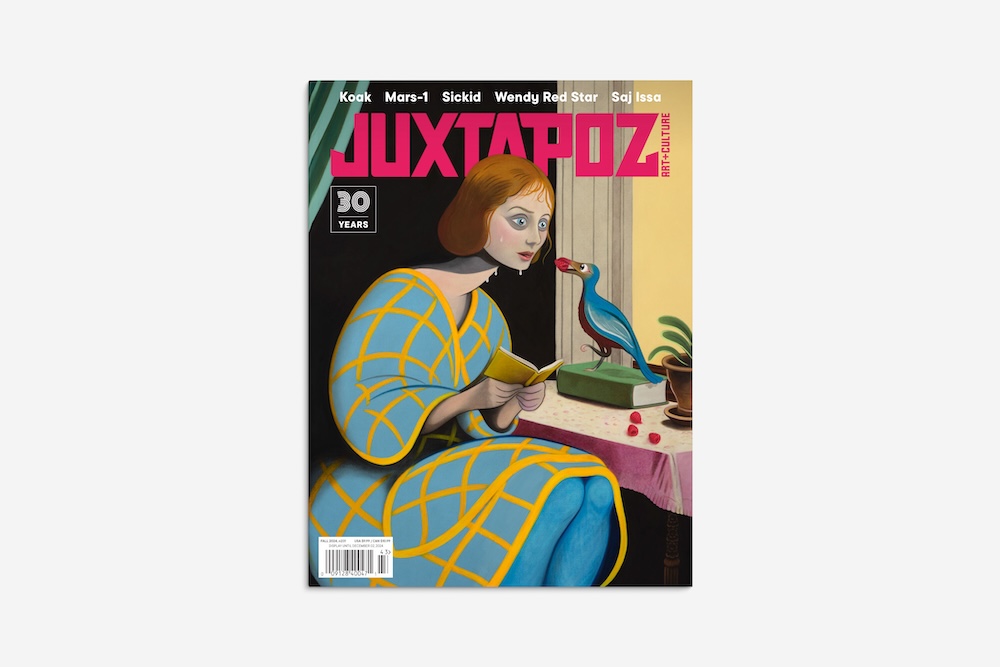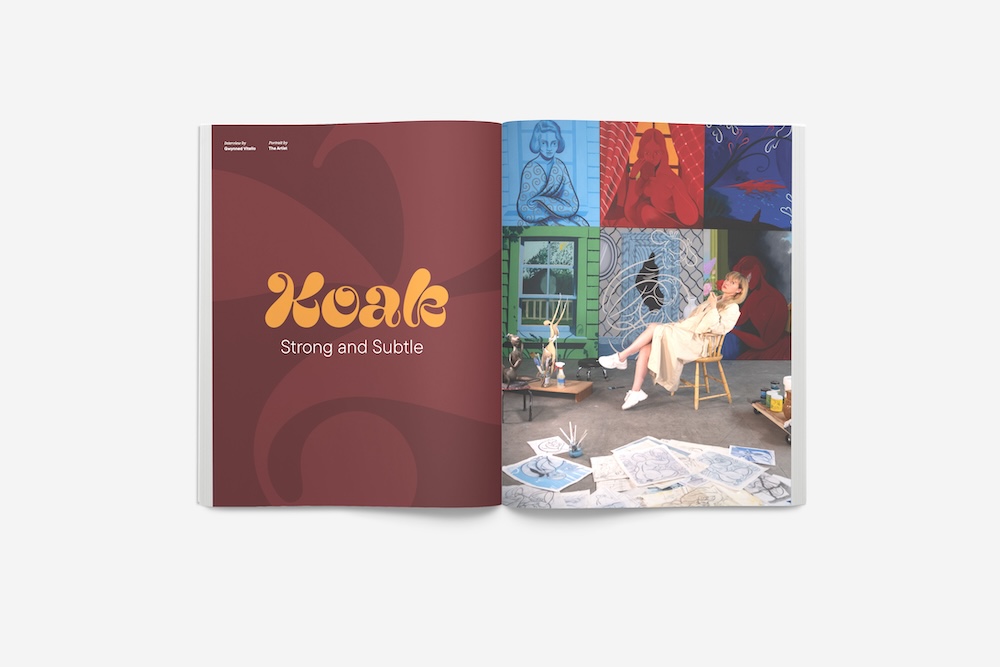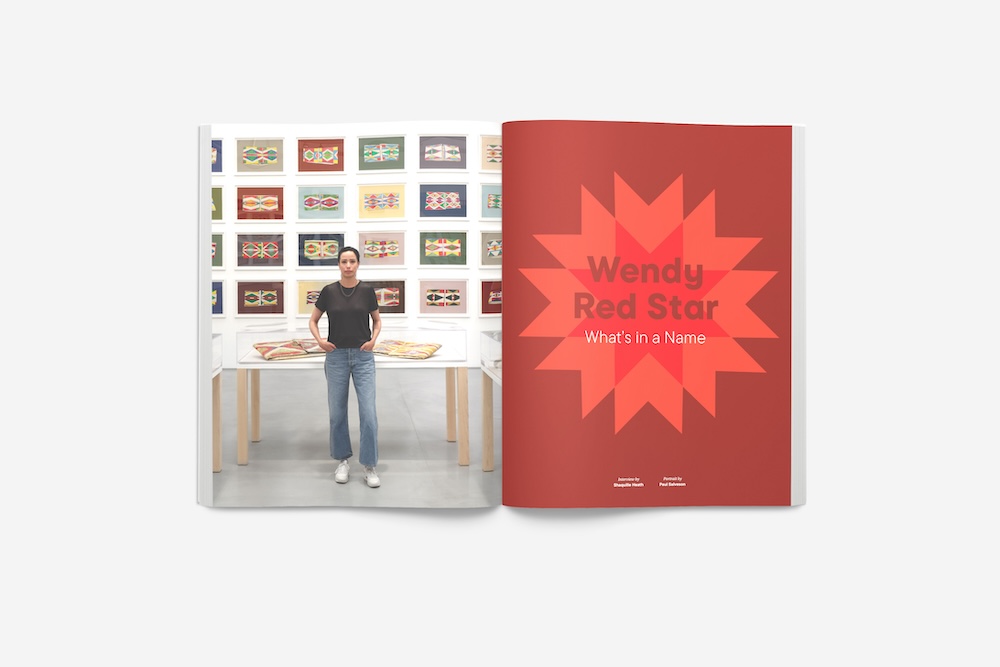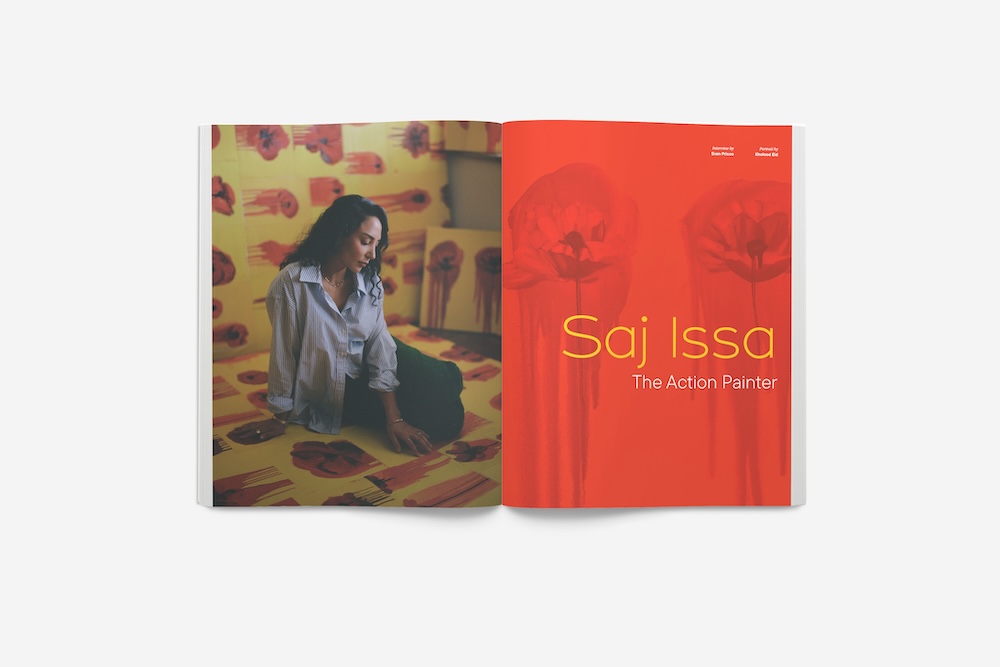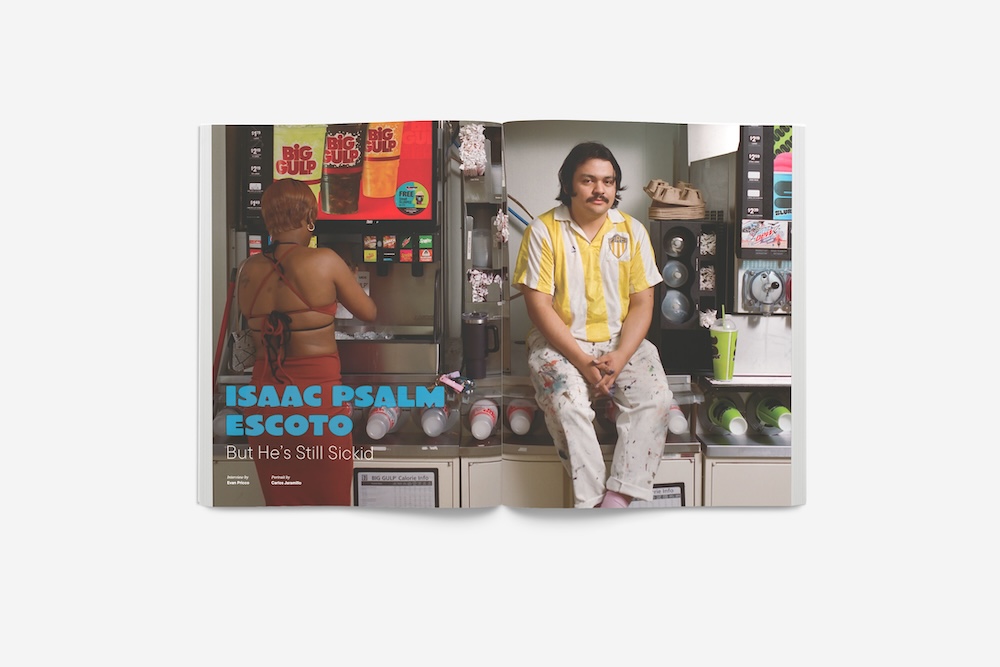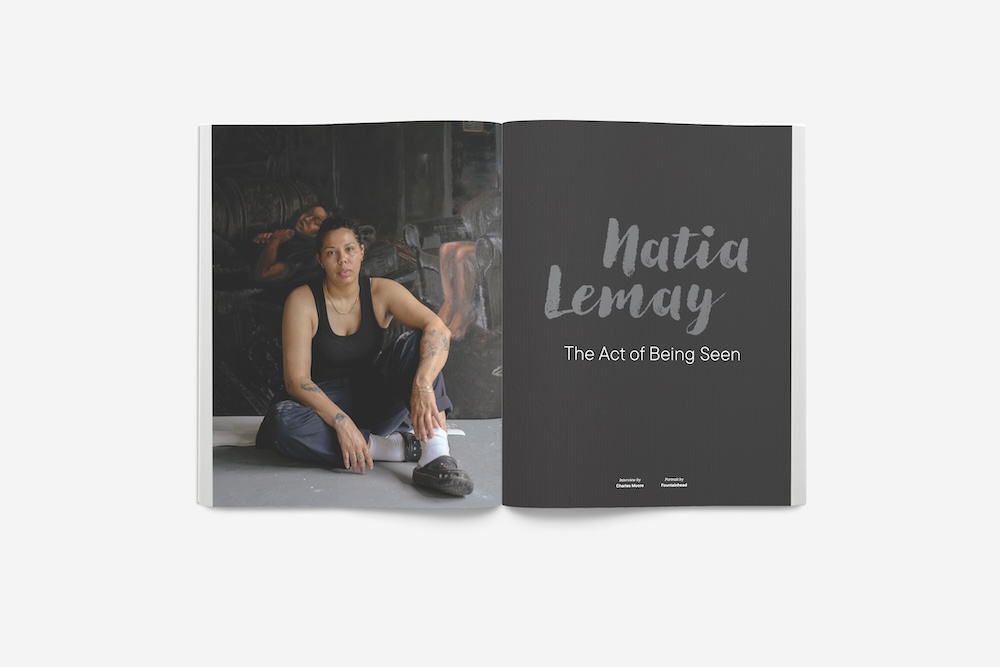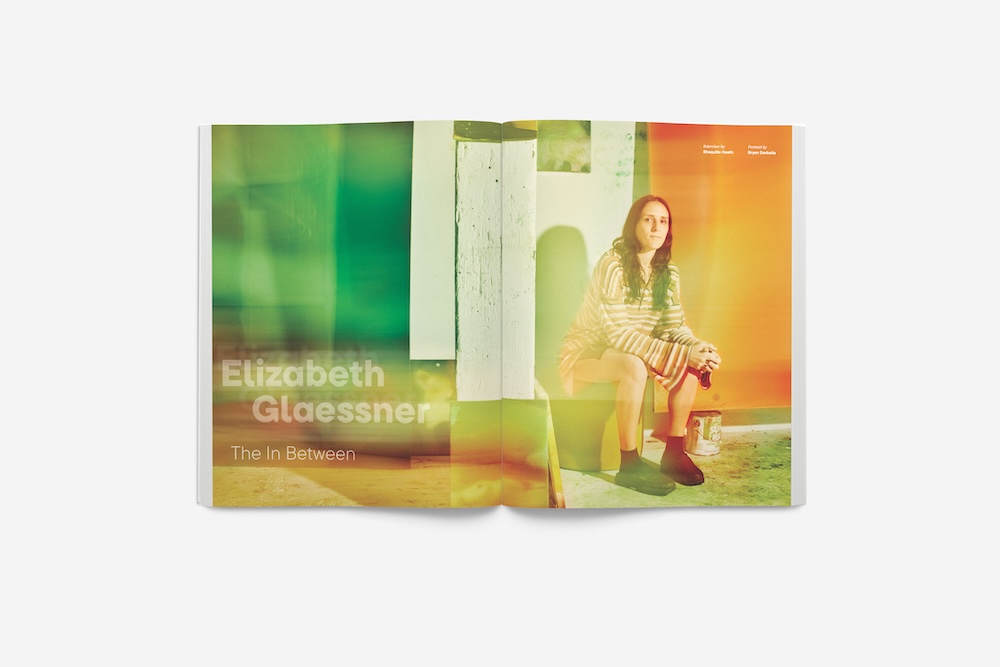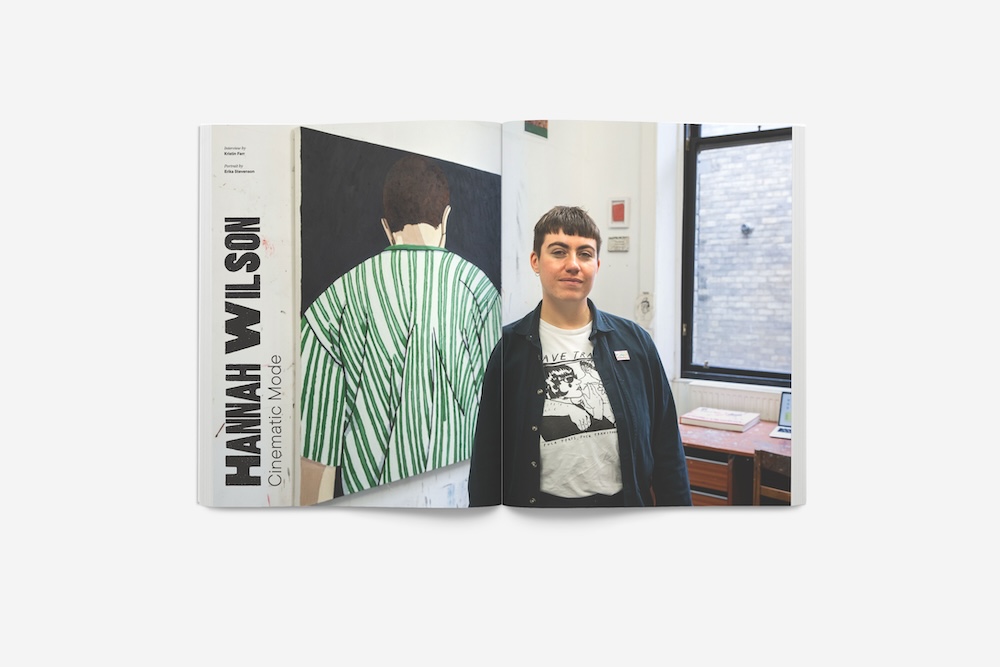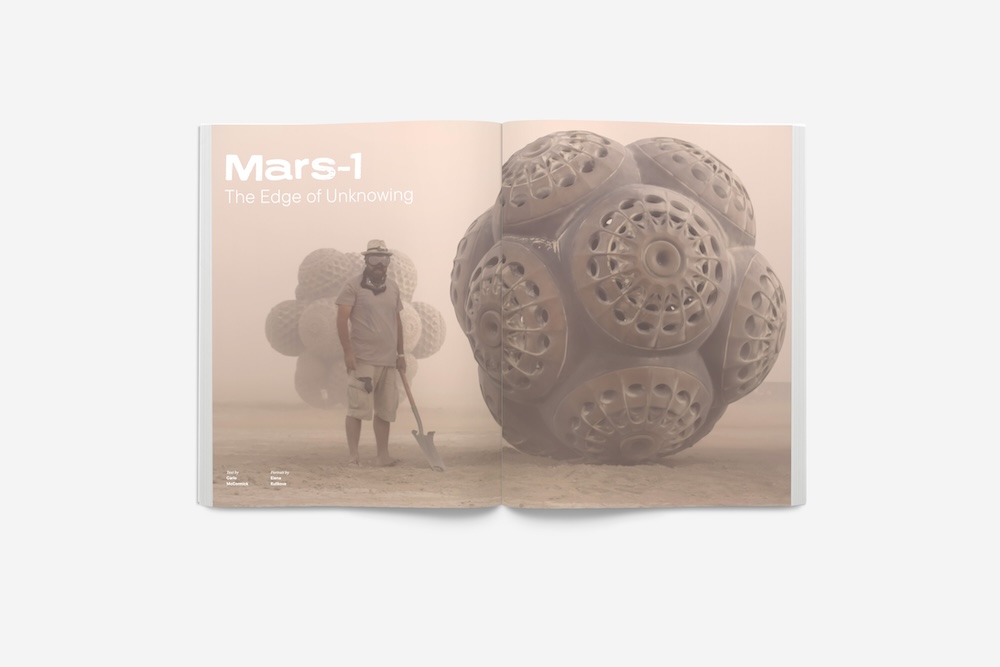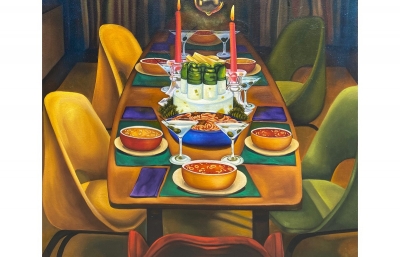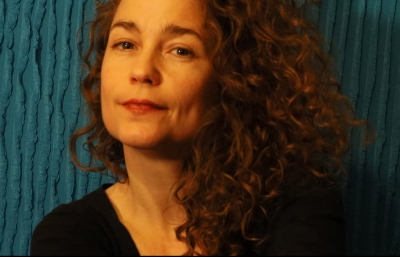“I paint what I like, when I like and where I like, with occasional nostalgic journeys.”—David Hockney, 1962
How brash was Hockney, full of that youthful zeal and self-confidence shared by countless artists with a similar aspiration to set the world afire with their talent and energy. For Hockney, it was about seeing meaning in everything, seeing art everywhere. On a flight home from Aberdeen, Scotland, this past June, I was thinking of the confluence of topics that were taking shape for the Fall Quarterly, a mixture of artists on the precipice of career-altering solo shows, along with deeper discussions of cultural heritage, war, climate change, communication, fascism, and by the end of the summer, perhaps a renewed sense of community and purpose.
The quote from Hockney felt appropriate for this issue in terms of the idea of painting what you like and where you like it. The Nuart Festival in Aberdeen this year, curated under the relevant topic of “living heritage,” addressed the dynamism of cultural heritage in its continuous transformation and interpretations as it is shaped and transmitted from generation to generation. The ephemeral nature of street art versus the archival nature of the museum's role was a central discussion as well. What I love about Nuart is that both completely possess their own merit, as they serve a role in our society. We need the intangibility of street art and the preservation of the museum, and they do work together in harmony. There should be no fear in asking our museum's to be privy to our public discussion of how much cultural heritage evolves, just as the streets should be welcome to a museum’s ability to interpret and archive our culture.
These different voices and avenues come to mind when composing a quarterly: where we find art, the aesthetics that seem to resonate, the subjects that move us. How do we achieve balance? It’s about giving space and importance to each moment, assuring all discussions are open to new possibilities of how and where art emerges. Fall Quarterly cover artist Koak perfectly capsulized this with her observation that, “Ultimately, it’s about connection and communication, with the intention of making something personal that resonates on a universal level and is made personal again by you, the viewer.”
This issue takes seriously conversations about respect and appreciation for cultural heritage. There are conversations about the politics of landscape painting in the West Bank with Palestinian-American painter Saj Issa. Sickid explores graffiti and first-generation immigrant heritage. Wendy Red Star dedicates her practice to the Apsáalooke in southern Montana, Glasgow’s Hannah Wilson thinks in the subtle, cinematic imagery, and Abram Jackson explains how museums embody these concepts. In the spirit of this issue, we learn the real life experience and perspective of Canadian painter Natia Lemay, who first entered a gallery space when she was 33 years old.
This may end up being a pivotal fall for many of us, and as Juxtapoz ends its 30th year, we are reminded that the artists speak not only from a personal perspective but with a reverence for what is beautifully universal. Perfect harmony. —Evan Pricco, Juxtapoz editor
Subscribe or Buy FALL 2024 here.
Featured artists in FALL 2024 include Koak, Sickid, Hannah Wilson, Wendy Red Star, Elizabeth Glaessner, Saj Issa, Joseph Olisaemeka Wilson, Meegan Barnes, Mars-1, Natia Lemay, Pia Paulina Guilmoth, a spotlight on the contemporary art movement in Mexico, the history of color at Winsor & Newton, and a conversation with the Director of Interpretation at the Fine Arts Museums of San Francisco, Abram Jackson.

